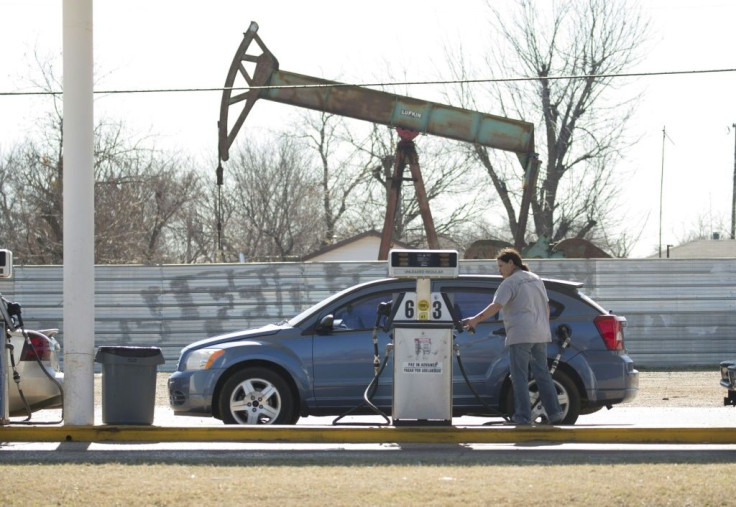Devastating Oil Glut Sends Prices Into Negative, Wall Street Down

US oil prices crashed to unprecedented lows Monday as futures in New York ended in negative territory for the first time amid a devastating supply glut that has forced traders to pay others to take the crude off their hands.
With space to store oil scarce, US benchmark West Texas Intermediate for May delivery closed at -$37.63 a barrel.
The futures contract for May closes Tuesday, meaning traders who buy and sell the commodity for profit needed to find someone to take physical possession of the oil. But with the glut in markets and storage facilities full, buyers were scarce.
"It's a contract for something that nobody wants to buy," said Matt Smith of ClipperData.
Addressing reporters after the market close, President Donald Trump reiterated his promise to fill up the Strategic Petroleum Reserve, saying the US would add as much as 75 million barrels of crude.
"That would be the first time in a long time that it has been topped out. We get it for the right price," Trump said.
Later in the briefing, he specified that he would only buy that amount if Congress authorized the funding -- or if the federal government could rent storage space to third parties for a fee.
As of April 17, the SPR contained 635 million barrels of its current authorized limit of 713.5 million barrels.
The cratering oil prices prompted more selling on Wall Street, which was slowly creeping back up after the coronavirus pandemic battered the major indices.
US stocks opened lower and stayed that way all day, with the Dow petering out to post a 2.4 percent decline.
The chaos in the oil market comes as the petroleum industry emerges as one of the cornerstones of the global economy made most vulnerable by government shutdowns to limit the spread of coronavirus.
The commodity has been further weakened by a battle for market share that raged much of the spring between Saudi Arabia and Russia.

A deal announced last week between OPEC and independent producers to cut output by about 10 million barrels per day starting in May appears not to have been enough to buoy prices, while the closely-monitored storage capacity at Cushing, Oklahoma was almost full as of Monday morning.
"It's a dump at all cost as no one... wants delivery of oil, with Cushing storage facilities filling by the minute," AxiCorp's Stephen Innes said.
"It hasn't taken long for the market to recognize that the OPEC+ deal will not, in its present form, be enough to balance oil markets."
Still, Smith noted Monday's negative price only affects oil deliveries due Tuesday.
US oil futures for delivery in June also fell sharply, dropping 18 percent, but finished at $20.43 a barrel.
The European benchmark contract, London Brent North Sea oil for June delivery, ended down nine percent at $25.57 a barrel.
"This moment is of course historical and could not better illustrate the price utopia that the market has been in since March, when the full scale of the oversupply problem started to become evident," said Rystad Energy's Oil Markets Analyst Louise Dickson.

Meanwhile, most European stock markets ended the day higher as governments start to consider how and when to ease the lockdowns that have crippled the global economy.
Italy, Spain, France and Britain reported drops in daily death tolls and slowing infection rates, while Germany began allowing some shops to reopen and Norway restarted nurseries.
West Texas Intermediate: DOWN 306 percent at -$37.63 a barrel
Brent North Sea crude: DOWN 9.0 percent at $25.57 per barrel
New York - Dow: DOWN 2.4 percent at 23,650.44 (close)
New York - S&P 500: DOWN 1.8 percent at 2,823.16 (close)
New York - Nasdaq: DOWN 1.0 percent at 8,560.73 (close)
London - FTSE 100: 0.5 percent at 5,812.83 (close)
Frankfurt - DAX 30: UP 0.5 percent at 10,675.90 (close)
Paris - CAC 40: UP 0.7 percent at 4,528.30 (close)
EURO STOXX 50: UP 0.7 percent at 2,909.50 (close)
Tokyo - Nikkei 225: DOWN 1.2 percent at 19,669.12 (close)
Hong Kong - Hang Seng: DOWN 0.2 percent at 24,330.02 (close)
Shanghai - Composite: UP 0.5 percent at 2,852.55 (close)
Euro/dollar: DOWN at $1.0863 from $1.0875 at 2100 GMT Friday
Dollar/yen: UP at 107.67 yen from 107.54
Pound/dollar: DOWN at $1.2435 from $1.2499
Euro/pound: UP at 87.34 pence from 87.01 pence
© Copyright AFP {{Year}}. All rights reserved.





















